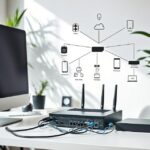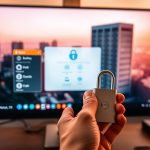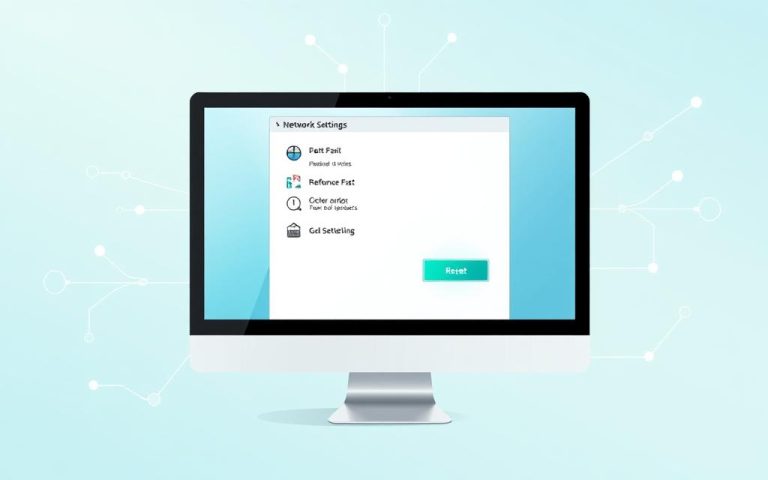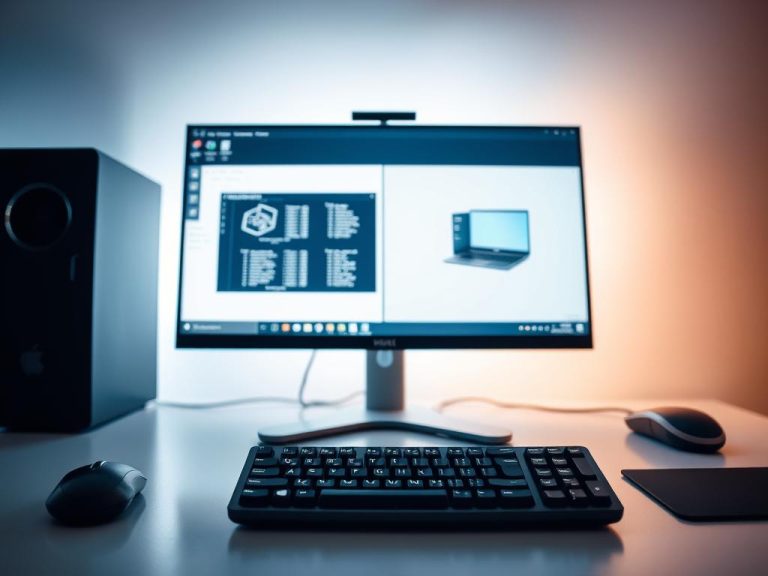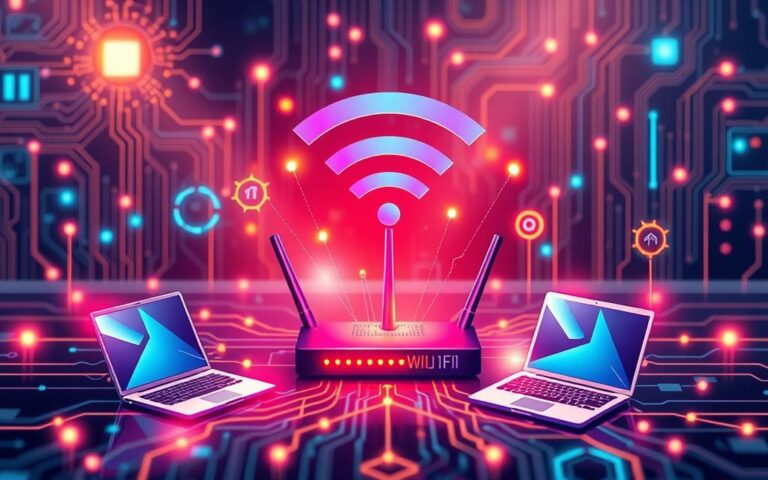Troubleshooting: Why Can’t I Find a Computer on My Network?
Finding a computer on your network can be tough, particularly with Windows 10 or 11. Users often face trouble connecting to shared resources or spotting other devices in the workgroup. These problems can arise from wrong Windows updates, network settings not set correctly, or issues with network adapters.
Seeing devices on a local area network (LAN) is key for computers to talk smoothly to each other. If network discovery doesn’t work well, connecting to other computers can be hard. Let’s delve into how to solve issues like not being able to see other computers on the network.
Understanding Network Discovery Issues
Network discovery issues can significantly impact Windows networking. They affect the ability to see and use devices on networks. Knowing the common causes is key to fixing these issues quickly.
Common Causes of Network Discovery Problems
Several factors lead to these problems, including:
- Incorrect network setups
- Turned off network discovery settings
- Windows updates changing settings
- Key services being disabled, like Function Discovery Resource Publication and Function Discovery Provider Host
- Not having SMBv1, which newer Windows versions don’t install by default
For example, after the Spring Creators Update, many found network issues on domain computers. They saw fewer other computers. Turning on SMBv1 can fix this, letting all workstations show in the network.
The Importance of Network Discovery in Windows
Network discovery is vital for accessing shared network resources. It lets devices see each other for easy sharing of files. Without it, finding shared drivers or devices becomes hard, slowing down work.
The end of Homegroup in Windows 10 version 1803 made things harder too. It’s crucial to make sure the right services are on, set to automatic, and working well for a good network setup.
| Common Causes | Impact | Resolution |
|---|---|---|
| Incorrect network setups | Harder to see networked devices | Check settings in Network and Sharing Centre |
| Disabled network discovery settings | Can’t find other computers | Switch network discovery on in settings |
| Disabled services (e.g., FDResPud) | Devices not showing on the network | Make sure services start and are on automatic |
Checking Your Network Configuration
If computers aren’t showing on your network, it’s important to check your network setup. Making sure the network settings and sharing options are correct can help with visibility and connection.
Verifying Network Settings and Sharing Options
Start by looking at the sharing settings on your computer. Here’s what to do:
- Open the Control Panel and go to Network and Sharing Center.
- Click on Change advanced sharing settings.
- Check that Turn on network discovery and Turn on file and printer sharing are on.
Also, you should check your firewall settings. To turn on network discovery, use this command in Command Prompt: netsh advfirewall firewall set rule group="Network Discovery" new enable=Yes. And, set Function Discovery Provider Host and Function Discovery Resource Publication to start automatically with a delay.
Importance of Setting the Network as Private
It’s key to set your network as private for devices to communicate well. If it’s set as public, computers and devices won’t see each other. To change your network to private:
- Head to Network and Sharing Center and pick your network connection.
- Hit Properties and then select Private network.
Making your network private makes sharing easier and improves device management. It’s wise to double-check the Control Panel’s sharing settings to enable all needed options for a private network.
Following these steps is key for network discovery to work well. It lets devices on the network communicate better. Setting up your network and privacy settings correctly is essential for good connectivity.
Can’t Find Computer on Network: Troubleshooting Steps
Sometimes, it can be tough to find a computer on the network. But, you can fix this by following some steps. Start by turning on network discovery and file sharing. This makes your device visible to others. Next, use the command prompt to reset the network settings. This fixes many connection problems. Finally, restart your network services to make sure everything communicates well.
Enabling Network Discovery and File Sharing
To fix visibility problems, turn on network discovery and file sharing first. Go to the Network and Sharing Centre in Windows. Here’s how:
- Open Control Panel.
- Select Network and Internet, then Network and Sharing Centre.
- Click on Change advanced sharing settings.
- Under Private, activate Turn on network discovery and Turn on file and printer sharing.
- Save your settings.
Using the Command Prompt for Network Resets
The command prompt can fix network issues quickly. A reset might be all you need. Here are some commands that help:
| Command | Description |
|---|---|
| ipconfig /release | Releases the current IP address. |
| ipconfig /renew | Gets a new IP address from the DHCP server. |
| netsh advfirewall reset | Puts Windows Firewall settings back to default. |
Using these commands helps reset your network. This solves many connectivity problems.
Restarting Essential Network Services
Restarting certain network services fixes communication issues. Important services to check include:
- Function Discovery Provider Host
- Function Discovery Resource Publication
- SSDP Discovery
- UPnP Device Host
To get these services running again:
- Hit Windows + R to open Run.
- Type services.msc and hit Enter.
- Find the service, right-click, and pick Restart.
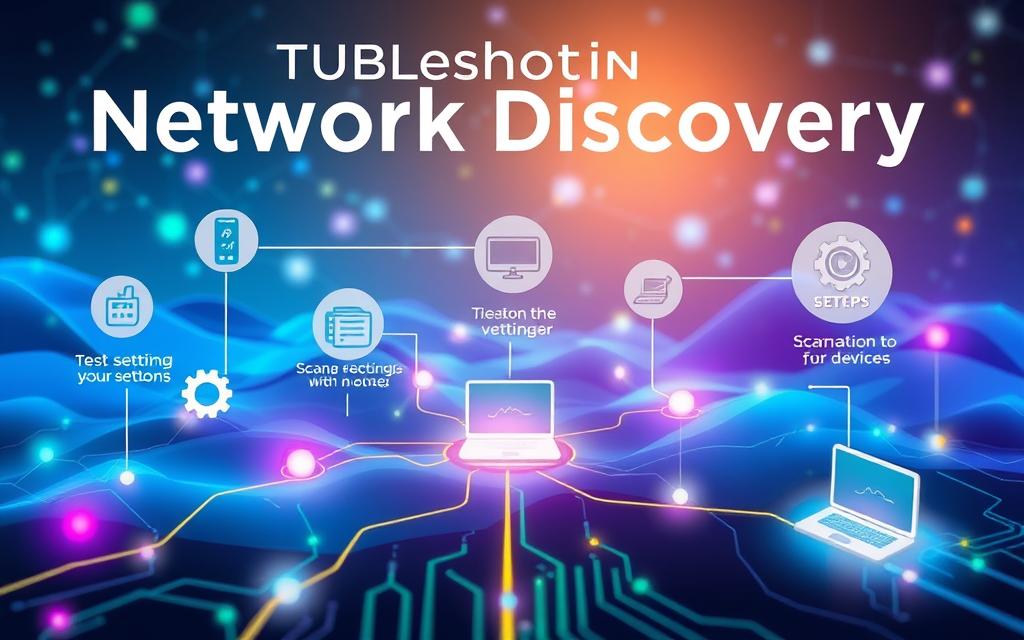
Follow these steps, and you’ll increase your chances of spotting the computer on your network. Each step is part of a detailed plan to tackle visibility and connectivity issues.
Turning on SMB 1.0 and Computer Browser Service
In the world of Windows networking, enabling SMB 1.0 and the Computer Browser Service is key. This is particularly true in places with older tech. It helps devices see each other on the network.
How to Enable SMB 1.0 Protocol
To enable SMB 1.0, head to the Control Panel. Open the Programs and Features section. Then, click on Turn Windows features on or off. Look for SMB 1.0/CIFS File Sharing Support in the menu that pops up. Check this option and confirm your changes. But be wary, as turning on SMB 1.0 can make your system open to attacks like ransomware. If you’re uncertain, seek help through resources like this guide.
Understanding the Role of the Computer Browser Service
The Computer Browser Service helps keep a list of computers that are active on your network. This makes it easier for devices to find each other, which improves the network. But recent Windows updates have changed how it works, making it less automatic. To keep your network running well, make sure the Computer Browser Service is active. It might help to set it to automatically start within the Services management console.
| Protocol/Service | Purpose | Considerations |
|---|---|---|
| SMB 1.0 | File sharing and network discovery among older devices. | Risk of security vulnerabilities. Use with caution. |
| Computer Browser Service | Maintains a list of active computers for easier discovery. | May need to be restarted or set to automatic. |
| Function Discovery Services | Facilitate network discovery for connected devices. | Must be running and set to Automatic for optimal performance. |
Managing these settings right ensures a strong network. It helps steer clear of common visibility problems in Windows 10 and 11.
Conclusion
Understanding how to find network issues is key to fixing connection problems. This article covered many ways to improve network connections. It helps people find and fix the main reasons for network troubles. Checking your network settings and turning on needed services are important steps.
Even though Windows 11 brings new challenges, following these steps can help a lot. If you still have trouble, looking at detailed guides can offer more help. This guide is a good place to start.
With careful settings and using many tools, you can solve connection problems well. These tips give you a good chance to keep your network running smoothly. Whether at home or work, this advice can help you deal with network issues.
FAQ
What can I do if I can’t find a computer on my network?
Make sure network discovery is on in the Network and Sharing Centre. Check your firewall settings are right. Both devices should be on the same private network.
What are common causes of network discovery problems?
Incorrect network setup, network discovery being off, and Windows updates changing settings can cause issues.
Why is network discovery essential for Windows users?
It lets devices on a network share resources and talk to each other. This improves work and team projects.
How can I check and configure my network settings?
Go to the Network and Sharing Centre to adjust your settings. Turn on network discovery and file sharing. Make sure your network is private.
How can I enable network discovery and file sharing?
Open the Network and Sharing Centre and go to advanced sharing settings. Turn on network discovery and file sharing from there.
What commands can I use in the Command Prompt to reset network settings?
Commands like `ipconfig /release`, `ipconfig /renew`, and `netsh advfirewall reset` can fix network problems.
What should I do to restart essential network services?
Open the Services application. Check if services like Function Discovery are on. If they’re not, start them to improve device talks.
How do I enable the SMB 1.0 protocol, and why might I need it?
Go to Control Panel, then Programs and Features, and click Turn Windows features on or off. Be careful, as SMB 1.0 might make your system less secure.
What is the purpose of the Computer Browser Service?
This service keeps a list of computers on the network. It’s key for finding devices after Windows updates.



